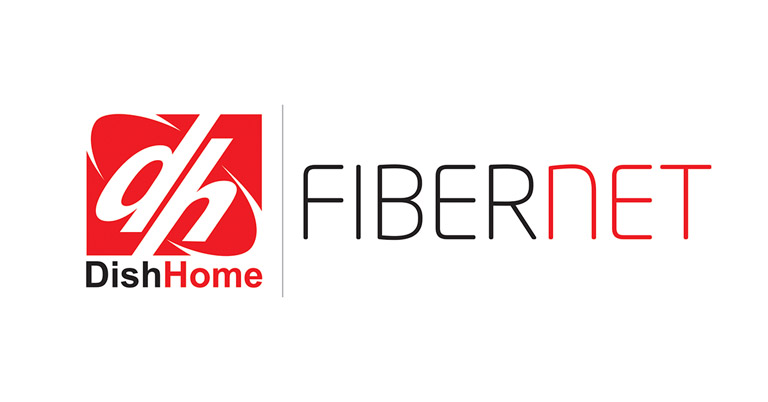Explained: How are CG and DishHome offering internet at such cheap prices?
GadgetByte Nepal
Jun 16, 2021

CG Net recently entered the Nepali market, breaking the long-standing costly slumber of Nepali ISPs. This was soon followed by DishHome, which launched a 25 Mbps internet subscription at an astounding price. But, have you wondered about the reasons how CG and DishHome have managed to provide internet at such a cheap price in Nepal?
Today we're going to discuss how these ISPs are actually offering affordable internet in Nepal. However, our speculation might be incomplete in the sense that these companies have different market strategies to turn Nepal's internet space upside-down.
Nepalese consumers have always been demanding low-cost internet subscriptions. The new players in the country's ISP market have clearly understood this outcry and therefore entered the industry.
Furthermore, the market trend has captured the attention of the youth. While our neighboring country India enjoys some of the cheapest data rates in the world, things are far too expensive here. This leaves an indelible imprint on our minds, and we are eager to experience such revolutionary developments when it arrives in Nepal. However, in the case of CG and DishHome, they are offering their services at an extremely low rate. As a result, their pricing becomes an indirect advertising component, and consumers happily share the available information about it. Now, clients are no longer just service takers; they are also promoters. That is, the corporation does not require any branding or large holding on the streets because its advertising is already in the public’s house.This is a globally established strategy, and businesses like CG and DishHome can really save a lot with it. And, as they are able to reduce some of their expenditure, users get the benefit with low-cost internet.
However, in the case of CG and DishHome, they are offering their services at an extremely low rate. As a result, their pricing becomes an indirect advertising component, and consumers happily share the available information about it. Now, clients are no longer just service takers; they are also promoters. That is, the corporation does not require any branding or large holding on the streets because its advertising is already in the public’s house.This is a globally established strategy, and businesses like CG and DishHome can really save a lot with it. And, as they are able to reduce some of their expenditure, users get the benefit with low-cost internet.
Now, when a business introduces a service at a lower price than its competitors, people are ecstatic to use it. This drives away the customers from the competition to the newcomers. As a result, this is the stage when the company starts penetrating the market in a disruptive manner.While this is true, new competitors in ISP areas should have offered their services at modest profit margins. However, it has a long-term positive impact on their business.For instance, we do not change service providers until we are displeased with them; and if these newcomers can give customer-satisfactory service, why would anyone switch? So, clients stay in the same domain for a longer period of time. And, even if the businesses reserve low profit in the first year, they start maximizing profits in the following years.
Besides revolutionary introductory pricing, the next big thing that will influence customer perception is consistency in service. We'll get to witness it as time goes on. Regardless, we hope that CG and DishHome continue to follow their current trend.
Cheap internet in Nepal:
CG has been attempting to join the Nepali telecom industry for some time but has not found success since it couldn't obtain a unified license. Regardless, CG Communications (one of the subsidiary companies under Chaudhary Group) introduced CG Net in Nepal at a disruptively competitive price. DishHome, on the other hand, came up with some cost-effective internet solutions for its existing customers.Today we're going to discuss how these ISPs are actually offering affordable internet in Nepal. However, our speculation might be incomplete in the sense that these companies have different market strategies to turn Nepal's internet space upside-down.
Market Trend / Customer Demand
Before we go any further, let's discuss why businesses are turning their attention to the internet.
Nepalese consumers have always been demanding low-cost internet subscriptions. The new players in the country's ISP market have clearly understood this outcry and therefore entered the industry.
Furthermore, the market trend has captured the attention of the youth. While our neighboring country India enjoys some of the cheapest data rates in the world, things are far too expensive here. This leaves an indelible imprint on our minds, and we are eager to experience such revolutionary developments when it arrives in Nepal.
Reasons for cheap internet from CG and DishHome
Low operation and Infrastructure cost
Considering CG Net and DishHome are still in their infancy in the ISP industry, their spending is lower than that of the established service providers. According to CG Net's managing director, Mr. Niravana Chaudary, the business started its service with FTTH, therefore it doesn't have to rely on any legacy infrastructures like its competitors.Furthermore, they have several additional cost-cutting opportunities, such as their relatively small size, minimal operating and maintenance expenses, and so on. Such cost-cutting gains might be directly shared with users by offering low-cost internet access.Price is the actual promotion
Looking at the current trend, most ISPs spend thousands only to promote and increase brand reach by appointing a brand ambassador. Users are the primary source of income for such activities, whether directly or indirectly; which of course, raises the cost of bandwidth internet for users.
Loss Leading Strategy
Companies use this approach to provide their service at an extremely low price in order to win clients in a saturated market—especially in the early days of their establishment. This allows them to easily break into the market and garner widespread customer trust.Now, when a business introduces a service at a lower price than its competitors, people are ecstatic to use it. This drives away the customers from the competition to the newcomers. As a result, this is the stage when the company starts penetrating the market in a disruptive manner.While this is true, new competitors in ISP areas should have offered their services at modest profit margins. However, it has a long-term positive impact on their business.For instance, we do not change service providers until we are displeased with them; and if these newcomers can give customer-satisfactory service, why would anyone switch? So, clients stay in the same domain for a longer period of time. And, even if the businesses reserve low profit in the first year, they start maximizing profits in the following years.
Verdict
It's encouraging to see that, despite the high tariffs levied by the Nepalese government, companies are attempting to provide low-cost internet access. However, how long it’s gonna remain is still to be seen.Besides revolutionary introductory pricing, the next big thing that will influence customer perception is consistency in service. We'll get to witness it as time goes on. Regardless, we hope that CG and DishHome continue to follow their current trend.
- Meanwhile, check out our video of gaming PC build under $1,000.

To say something about myself, I have been writing tech and gadgets from 2021. Although coming from a non technical studies background, I'm someone who is always fascinated by the latest gadget and tech innovations, circling around. Besides writing, you'll find me listening music and aligning the stars through astrology and sometimes even, tarot cards! 😉🧿
Comments
No comments yet. Add a comment to start a discussion




